Hola MaHighSchool

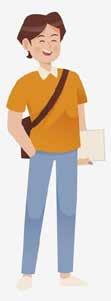
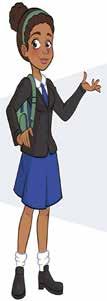
Volume 11, Issue 10, October 2022
WEEK 1 09:00 14:00
Monday 31/10 English HL P1 (2hrs) English FAL P1 (2hrs) English SAL P1 (2hrs)
Tuesday 01/11 Economics P1 (2hrs)
Wednesday 02/11 Afrikaans HL P1 (2hrs) Afrikaans FAL P1 (2hrs) Afrikaans SAL P1 (2hrs)
Thursday 03/11 History P1 (3hrs)
Friday 04/11 Mathematics P1 (3hrs)
Mathematical Literacy P1 (3hrs) Technical Mathematics P1 (3hrs)
Hindi, Gujarati, Tamil, Telegu, Urdu HL P1 (2hrs) Hindi, Gujarati, Tamil, Telegu, Urdu FAL P1 (2hrs) Hindi, Gujarati, Tamil, Telegu, Urdu SAL P1 (2hrs) Hebrew SAL P1 (2hrs) German HL, SAL P1 (2hrs)
Arabic, French, Italian, Mandarin, Modern Greek, Serbian, Spanish SAL P1 (2hrs)
Latin SAL P1 (3hrs) Portuguese HL, FAL, SAL P1 (2hrs)
Hindi, Gujarati, Tamil, Telegu, Urdu HL P2 (2½hrs) Hindi, Gujarati, Tamil, Telegu, Urdu FAL P2 (2hrs) Hindi, Gujarati, Tamil, Telegu, Urdu SAL P2 (2hrs) Hebrew SAL P2 (2hrs) German HL P2 (2½hrs), SAL P2 (2hrs)
Engineering Graphics and Design P1 (3hrs)
Arabic, French, Italian, Mandarin, Modern Greek, Serbian, Spanish SAL P2 (2hrs)
Latin SAL P2 (1½hrs) Portuguese HL P2 (2½hrs), FAL, SAL P2 (2hr) Equine Studies (3hrs)

WEEK 2 09:00 14:00
Monday 07/11 Mathematics P2 (3hrs) Mathematical Literacy P2 (3hrs) Technical Mathematics P2 (3hrs)
Tuesday 08/11 isiZulu, isiXhosa, Siswati, isiNdebele HL P1 (2hrs) FAL P1 (2hrs) SAL P1 (2hrs)
Wednesday 09/11 Sepedi, Sesotho, Setswana, Xitsonga, Tshivenda HL P1 (2hrs) FAL P1 (2hrs) SAL P1 (2hrs)
Thursday 10/11 History P2 (3hrs) South African Sign Language HL P1 (2hrs)
Friday 11/11 Physical Sciences (Physics) P1 (3hrs) Technical Sciences P1 (3hrs)
Hindi, Gujarati, Tamil, Telegu, Urdu HL P3 (2½hrs) FAL P3 (2½hrs)
Portuguese, German HL P3 (2½hrs) Portuguese FAL P3 (2½hrs)
Economics P2 (2hrs)
Computer Applications Tech P2 (Theory) (3hrs)
Information Technology P2 (Theory) (3hrs)
Religion Studies P1 (2hrs)
WEEK 3 09:00 14:00
Monday 14/11 Physical Sciences (Chemistry) P2 (3hrs) Technical Sciences P2 (1½hrs)
Tuesday 15/11
Geography (Climate and Weather, Geomorphology and Mapwork) P1 (3hrs)
Wednesday 16/11 Accounting P1 (2hrs)
Thursday 17/11 English HL P2 (2½hrs) English FAL P2 (2½hrs) English SAL P2 (1½hrs)
Friday 18/11 Life Sciences P1 (2½hrs)
Religion Studies P2 (2hrs)
Dance Studies (3hrs)
Engineering Graphics and Design P2 (3hrs)
Civil Technology (3hrs)
Visual Arts (3hrs)
NATIONAL SENIOR CERTIFICATE (NSC) OCTOBER/NOVEMBER EXAMINATIONS TIMETABLE 2022
WEEK 4 09:00 14:00
Monday 21/11 Life Sciences P2 (2½hrs)
Tuesday 22/11
Sepedi, Sesotho, Setswana, Xitsonga, Tshivenda HL P2 (2½hrs), FAL P2 (2½hrs), SAL P2 (1½hrs)
Wednesday 23/11 isiZulu, isiXhosa, Siswati, isiNdebele HL P2 (2½hrs) FAL P2 (2½hrs) SAL P2 (1½hrs)
Thursday 24/11 Afrikaans HL P2 (2½hrs) Afrikaans FAL P2 (2½hrs) Afrikaans SAL P2 (1½hrs)
Friday 25/11 Accounting P2 (2hrs)
Electrical Technology (3hrs)
Geography (Rural and Urban Settlement, Economic Geomorphology of SA and Mapwork) P2 (3hrs)
Business Studies P1 (2hrs) Marine Sciences P1 (2½hrs)
Tourism (3hrs)
Agricultural Sciences P1 (2½hrs) Nautical Science P1 (3hrs) Sport and Exercise Science (3hrs)
WEEK 5 09:00 14:00
Monday 28/11 isiZulu, isiXhosa, Siswati, isiNdebele HL P3 (3hrs) FAL P3 (2½hrs) SAL P3 (2½hrs)
Tuesday 29/11 Sepedi, Sesotho, Setswana, Xitsonga, Tshivenda HL P3 (3hrs) FAL P3 (2½hrs) SAL P3 (2½hrs) South African Sign Language HL P3 (3hrs)
Wednesday 30/11 English HL P3 (3hrs) English FAL P3 (2½hrs) English SAL P3 (2½hrs)
Agricultural Sciences P2 (2½hrs) Nautical Science P2 (3hrs)
Business Studies P2 (2hrs) Marine Sciences P2 (2½hrs)
Mechanical Technology (3hrs)
Thursday 01/12 Consumer Studies (3hrs)
Design (3hrs)
(3hrs)
Friday 02/12 Afrikaans HL P3 (3hrs) Afrikaans FAL P3 (2½hrs) Afrikaans SAL P3 (2½hrs)
Monday
Tuesday
Wednesday
Thursday
Agricultural Management Practices (3hrs) Maritime Economics (3hrs)
Music
Hospitality Studies
WEEK 6 09:00 14:00
05/12 Music P1 Theory (3hrs) South African Sign Language HL P2 (2½hrs)
P2 Comprehension (1½hrs)
06/12 Dramatic Arts (3hrs) Agricultural Technology (3hrs)
07/12 CAT rewrite (3hrs) Practical IT rewrite (3hrs) Practical
08/12 Friday 09/12 09:00 Monday, 5 September Life Orientation (LO CAT) (2½hrs) Tuesday 25 October Computer Applications Tech P1 (3hrs) Practical Wednesday 26 October Information Technology P1 (3hrs) Practical 15 August to 14 October Performing Arts Practical 06 October to 15 October Visual Arts and Design Practical Enquiries: Dr. R. Poliah Chief Directorate: National Assessment and Public Examinations (NAPE) 012-357 3900



Contents 02 School Calendar 06 Editor’s letter 08 Contributors 10 Holler at us 11 Exams are coming! 12 What do exams do for us? 14 Tomorrow Trust makes a difference 16 Exams at university: different? 18 Old Mutual - exam tips 20 Exams marks: important out there 22 TVETs - entrepreneurial spirit October

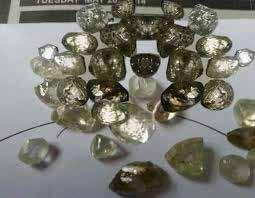



Contents 24 Dubai: example of future exams 26 Indigenous food - from America 30 Paris fashion show: spray-on dress 36 The real Nobel Prize 40 Cheating in chess? really? 46 Another week, another PM 50 Diamonds are forever! 56 It is Movie Time! 58 The Month of November 60 We need writers 62 Next Issue October 2022
Exams!
Exams also mean that
end of
is at
This issue is about

but not just tips and
have more than enough of
the
year
hand. Just that little hurdle left before it is all finished. ...But exams are still there!
exams,
revisions. You should
that.
We look at the difference between high-school and university exams. Some will meet this reality next year after all.
However, it is not just exams.
Did you read about that mega-diamond that sold for mega-bucks? well, we look at that part. Cheating in chess? that as well. Fascinating world.
Another week, another PM. Amazing to see a country tearing itself apart.
Masiziba is looking at our food heritage. So much not indigenous to SA, but we have embraced it.
Looking forward to the new Lord of the Rings? I am! the trailer looks ‘epic’ or ‘classic’? I love a good fantasy and this one has got it. Good read!
Sybil Otterstrom Editor
and CEO
WE are the
Contributors
Want to be a contributor? Wanting to write like a pro?
You CAN!
look firther and see how you can become one.
... and it is a good feeling to entertain and inform.
Masiziba Hadebe is doing her Master’s Agri cultural Economics at the University of the Free State (UFS). She is driven to make a change and is a passionate volunteer for community projects. She loves reading and writing about science, agriculture and anything in between. She believes you can wear a smile whatever the weather!
I am Marcia Ramodike from Limpopo Tzaneen at lenyenye. I am an author when not studying. I am passionate about writing and i live to give hope and wish to change the world. I love reading and in most of my time i write. My favourite book is ‘Her Mothers Hope by Francine Rivers.
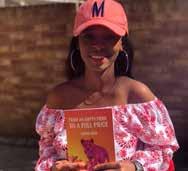
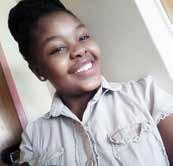
And we are honoured to also have industry-views from:
Edith Wynne-Trollip: Curriculum Support and advise, Overberg District Ashalia Maharajh: Founder & Director, Sivuka Consulting (Pty) Ltd Thozamile Mvumvu: CFE Programme Manager, False Bay TVET
Artvilla Dakamela, 22, another wizard from the literature world, he is an Accounting student at the University of the Free State. He has written for the Initiative for Creative African Narratives (iCAN) amongst others. He currently resides in DurbanKZN - and is a very enthusiastic reader and writer.

My name is Molatelo Kate Kgatla, I’m 24 years old. I was born and raised in Lenyenye. I’m a grade 2 teacher at Vunza Teddy Bear Learning Academy, an author of a book titled her jouney as a young mother. I became a mother at 17. It influenced me to write about my personal journey to try and help someone that could be going through the same. I love writing and I love my 7 year old daughter and life.



Lesly Malose Mahapa is a singer/writer/poet. He started writing at the age of 14 and has since been on a jour ney to pursue his music and writing career. Lesly is cur rently working with an indie group ‘MozSouth’ based in Ivory park, Midrand. Lesly is also a brand ambassador for a local clothing line “Boi Boi apparel”




facebook. com/ holamahigh HOLLER AT US Editor & Publisher Sybil Otterstrom sybil@romele.co.za Advertising sales Next level Management services cc 011 614 5046 076 360 1792 sybil@next-level.co.za Publishing Romele Publications cc 32 Eleanor street Troyeville 2094 011 614 5046/076 360 1792 Enquiries Romele Publications cc 32 Eleanor Street Troyeville 2094 Production and Art Direction Ivan Otterstrom ivan@romele.co.za Hola MaHighSchool Twitter.com/ high_hola
Exams! It is a highly debated and debatable subject. Are exams neces sary and what do they really do for us?


Is the exam situation realistic on what we are going to meet out there?
For now, at least, exams are traditional end-of-year horrors. Testing our memory really.
This is why we have got a few comments on all of this. Artvilla is providing insight into the life after high-school – university exams.
Nadia is looking at the other part of the equation: what does the industry look for? Do they look at exam results at all?
What about skills? this is where we have a new contribution from Transform Marketing. Read on. It is a refreshing way of looking at it. Fascinating.
We also ‘found’ our article on future exams. This is from Dubai. There are exams – sort of – but this is about ‘real-life’ problem areas where a student will have to use Powerpoint, google on the cell phone, Word, Excel, Internet and the entire set of tools we are now accustomed to.
It is highly fascinating and could point to what we might see. … if exams are going to be very different!
Here we are again! The dreaded time of the year. Exams, stress, nerves, relief, grief and a lot more.
Can the entire year be erased in a 4-hour session at exam? Are there other means of assessing a student?

I found something interesting here https://debatewise.org/1215-are-ex aminations-a-fair-way-of-testing-our-knowledge/
What we have to realise is that closed-book exam will test memory more than creativity and understanding of a subject. The limited time for an exam will then focus on a small amount of what has been taught through the year.

It is of course ‘fun’ to test a student’s ability to work under stress, but that cannot be the objective of exams.
We need to ask ourselves if it is even possible to ‘test’ knowl edge in a few hours?
It is possible to test ‘knowledge’ in terms of math and physics and those fact-based subjects. Subjective topics are far more difficult to grade. The typical essay is hard to grade as there are no ‘right’ answers.
If such tests now come down to the evaluators mood at the day of grading, we are in trouble.

To illustrate all of this, I have a wonderful analogy: “a physics teacher asks the class to use a barometer to measure the height of the Tower of Pisa. One student writes: I will attach a string to the barometer, lower it to the ground and then measure the length of the string. Problem solved.

The teacher failed him
The ‘correct’ answer was to measure the air pressure at the foot of the tower and also at the top of the tower. Apply some math and there is the height.
The student complained and argued that the question was not clear. There would really be many different an swers:
I could stand at the top of the tower and chuck the barometer over the railing and measure the time it takes before it hits the ground and splinters into many pieces. Apply math and there is the answer
Or I could measure the length of the shade of the ba rometer and the shade of the tower. Apply math and there is the answer.
… but the one I like the most: I will take the barometer to the souvenir shop and tell the owner that he can have this great thing if he can tell me the height of the tower.
Do we see the problem with exams?

Why South Africa’s underprivileged young IT aspirants are winning
Learners participating in the Tomorrow Trust’s holistic programme well on their way to studying information technology at tertiary level

“It’s my dream to study information technology one day,” says 15-year-old Tembisa Secondary School learn er Luyolo Zondi.
“I am a person who likes to explore, and IT allows that.”
Luyolo is just one of the thousands of learners whose educational journey is being supported by the Tomorrow Trust, a South African non-profit organisation that provides academic, career, psycho-social and digital upskilling assistance to vulnerable children and youth.
Now in Grade 10, Luyolo has been with the programme since the start of his school career and says the holiday and Saturday classes offered have given him the edge at his place of learning.
“I am very interested in programming and coding and I also enjoy physical science. I think what the Tomorrow Trust has helped

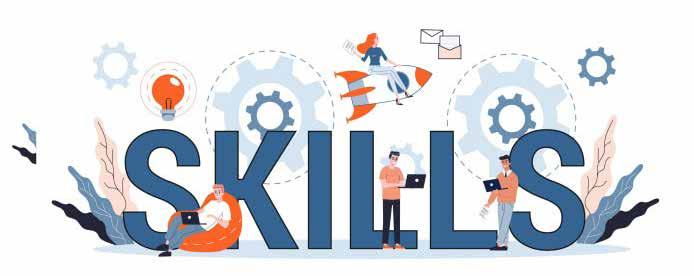
me most with is my confidence in these subjects,” he says.

“The classes have helped me improve my school marks. Actually, because of the programme I find myself two steps ahead of others in my class.”
Luyolo is not alone in his praise for the Saturday school and holiday programme, which is geared towards building and strengthening English, Maths, Life Sciences and Physical Sciences.
Tembisa High School learner Sandile Vilakazi, 16, has been with the To morrow Trust since the age of seven.
“The trust is helping us build a better future for ourselves,” Sandile says.
“They have really helped me a lot and I find that I am doing well at school. They are very kind and patient with us, always making sure we understand the work.”
The Tomorrow Trust receives its own support from the Datatec Educa tional and Technology Foundation, which has also recognised the im portance of investing in maths and science programmes in townships to produce outstanding graduates who will not only take the country for ward, but also uplift their own communities.
“Our vision for South Africa is perfectly aligned with that of the Tomor row Trust,” says Datatec Foundation chair Maya Makanjee.

Says Maya Makanjee: “Our commitment to improving performances in the STEM (Science, Technology, Engineering and Maths) subjects is because we believe these are key to unlocking prosperity for all South Africans.”

Submitted by Transform Marketing
Want to know more: Contact Tomorrow Trust
447 7707 or 066 115 3891 info@tomorrow.org.za
011
University exams versus high school exams
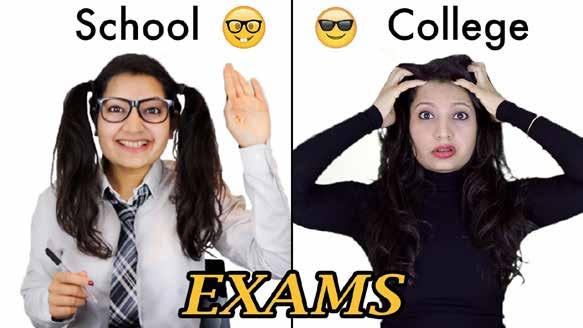
As you shift from high school to university, one of the key challenges you will face is getting to familiarize yourself with the differences in academics, particularly exams. Exams at university and high school, al though not completely identical, have many of the same qualities. These qualities become more formal as you go to university.

Exam patterns at a university are different from that of a high school. In high school, an academic course (Accounting, Mathematics, History, etc.) typically lasts a full year. And exams, for each course, are divided into three parts, namely the June examinations, September trials, and finals in November.
University, on the other hand, conducts only one exam for each aca demic course, and these university courses can either last for a full aca demic year or simply last for a semester, depending on the course. Because of the frequency at which high schools conduct their exams, learners are less overwhelmed compared to just having one exam.
Since the university is more advanced than high school, the textbooks become harder, the grading is quite strict, and lecturers ex pect students to digest the work at a faster rate, thus students become overwhelmed. And, although it is rare, a student may find him/herself having to write more than one exam in a day.
Exam administrations at university are much more formalized compared to high school.
Although it is instilled in your mind from the moment you start school, it is still worth mentioning that cheating is a no-no! A student can get a worldwide ban from other universities for just jokingly peaking at a friend’s exam script.
The exam conditions are similar but more formalized and stricter. In a university exam hall, you’d find a raised number of invigilators, CCTV cameras on hall ceilings, and identification check procedures.

All these differences do not increase the level of difficulty but multiply the amount of labor.
So now that you know the main differences between university and high school exams, it is now time to embrace the change and prepare yourself for university.
My personal experience has been that the shift allowed me to gain a sense of what it is like to be an accountant, since the exams at university focus more on application of knowledge rather than the ability to recall what you have learnt.
 Artvilla Dakamela
Artvilla Dakamela
Take practical steps to defeat stress and be ready for matric exams, says Old Mutual


The following is an extract of unsolicited material sent to us by Old Mutual’s media partner. The opinions may not reflect those Hola Ma High-School.
With the national Grade 12 exams beginning in just under a month, the stress on South Africa’s learners is ramping up. A number of leaners are likely to experience stress which is part of the exam process.
“Strangely enough, stress is normal. In fact, it can be a good thing because it can motivate you and help focus your studying efforts. However, knowing how to cope with stress can help you take the practical steps needed to avoid worrying without cause, which can change into panic or even depression.”
Increasing your chances of success in exams goes beyond knowing academic readiness. It is also about ensuring that you are physically, emotionally, and mentally ready for exams, says Old Mutual senior manager for education, Kanyisa Diamond. This will require seeking out available resources.
Some of the practical steps that she and other experts recommend are:
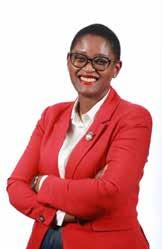

Avoid skipping meals, get enough sleep, make exercise a priority.
Pulling all-nighters is the quickest way to burn yourself out and negatively impact your ability to concentrate. Eating poorly and staying at your desk all day can also increase anxiety. To perform well, try and get at least eight hours of sleep.

About 30 minutes of exercise, simply walking around the block, for instance, will help clear your mind and keep you energised and able to concentrate on your studies for longer.
Finding and using resources that make studying easier Technology can reduce the studying load by providing resources that can focus your efforts. The Old Mutual ‘Learn. Think. Do’ ini tiative with selected partners pro vides online resources through the Matric Live App, which offers previous matric exam papers and live exam simulations so you can test yourself and bring the exam room into your home. An audio option makes learning simpler and more enjoy able.
“Working to a plan and seeking help when it is needed has never been more vital. Help is just a phone call away,” says Diamond. Good luck!
How your exam marks impact your future
As each term rolls past, along with the dreaded examinations, you may be wondering whether your final marks actually matter.
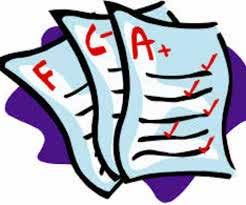
We are here to let you know that the marks you achieve will be con sidered and are a measure of your interest in the subject and direction. It shows potential future higher education institutions and employers more about your level of intellect and commitment - which are both crucial to secure a future filled with positive opportunities.

Here are three things your marks can communicate to future parties you want to impress or seek favour from:
Your level of knowledge and progresswhere you are at Each subject score reveals different elements of where you are in your development and studies on the specific subject matter. Looking at your marks and how you scored against your peer group can also show where you rate below, average or above your group; these measures are important as it will show your level of growth and education.
Every mark tells a story about how capable you are to learn and grow, this shows if you are a good investment, and can offer value as an em ployee or grad student.
Your interest in the subject and the direction your career is hoping to follow.
There is an old saying, that could even be viewed as an absolute fact, “How much you sow (invest), is what you will reap”. You must have heard your teachers or and parents say this? But before your eyes glaze over, the truth is if we have a prospective candidate we want to employ, they must show extra action and interest in the relevant subjects and role we are hiring them for.
If the marks are poor and there is not supporting evidence that you really have a passion for the subject, or even care to find extra classes or help to do better, sadly that speaks for itself.
Your marks show your real commitment Lastly, keep in mind always that your efforts and willingness to learn and work hard for what you want will be demon strated in your marks and your performance. Your marks tell the world how much time and effort you committed to your studies and to your future.

The positive news is that you can access many resources online and ask your teachers for support by recommending extra classes, books and resources. Do remember they are your marks, your future, and always your responsibility to take action and create a future you want and can be proud of!

Good luck!
Submitted by Nadea Hearn
Get-Published
Falsebay College’s Centre For Entrepreneurs, Launching Community Business Clinics and Student Entrepreneurship Ignition Cafes.

In acknowledging the need in communities and within the students on all its campuses, the college has reinforced its strategic goal to reach deeper into communities within its footprint and the student community, to ig nite Entrepreneurship. This initiative has been part of the College’s strate gic vision for some time, and the recent focus is but one of the college’s direct and purposeful initiatives to address socio-economic challenges by alleviating the plight of unemployment and poverty within the communi ties.
The two programmes are led by the Centre for Entrepreneurs which is currently housed with the Falsebay College in Westlake. The initiative aims to provide entrepreneurship training and development access points on all its college campus es, and these stations will also be accessible to community members with entrepreneurship goals. This will include community mem

bers with business ideas, which require development, to established business’ which require access to markets, business development services, coaching, and mentoring. The centers will initially open on certain days of the week, which are yet to be confirmed, up until there is permanent space made available and staff to man the access points at our five campuses:
The Ignition cafés will assist the students who have business ideas nurture and grow their ideas, and those with existing businesses provide support and advice on running a successful enterprise, entrepreneurship market linkages, access to technological resources, mini -factory etc.

This initiative is intended to im prove the social economic condi tions of less fortunate communities and reignite township economy and provide much-needed support to the Community Businesses and to the students.
It is also hoped that one of the spinoffs of this initiative, will be the creation of College graduates who are not only going to be job seek ers, but be self-employed and employers within their communities, and for them to ultimately scale their businesses to regional, national, and international markets.
The center began its series of launches during the last week of Sep tember at Westlake Campus and the campaign will soon be moving to Khayelitsha, Mitchell’s Plain, Muizenberg, Fish Hoek and Swartklip Campuses.
Thozamile Thomas Mvumvu
CFE Programme Manager

False Bay TVET College Thozamile is writing in his personal capacity
Exams in the future
Post-Covid
This is not so easy. Will we still sit for exams as we did 100 years ago? Why all this stress really and what is exam actually?
I found an interesting article here.
What is states is that exam has not moved from what was exam hundreds of years back.
I quote: “For the last 30 years, access to knowledge has been open and one of the most important skills has become knowing how to select, analyse, synthesise and combine exist ing knowledge in creative new configurations.
However, examinations test knowledge retention by hiding information to see how well students can recall narrowly selected pieces of it. Even online examina tions do not escape this contradiction”.
It gets more intricate: “Everyday life, most especially in the workplace, almost never involves exam-taking techniques. People do presentations, they write up assignments and argue positions. Might not critical thinking, curiosity and social skills be better taught, therefore?
Covid-19 by and large made exams impossible. Social distancing prevented the annual horror-show. Online exams could not fill the gap.

What we need to do is to re-look our so ciety and take this opportunity to create a different education system that just might be more in tune with the outside world. The emphasis could be on ability to search

the internet, to utilize the modern tools to make a presentation (whatsapp to propagate it), free internet software to design, youtube to create references, tweets from some media person as back ing up the arguments, and much more.

Remember: this is not about the tech nology. It is about using technology. And that can be applied to anything: art classes or life science and so on.
Is it too much? If the educational system is to educate for life, we have to think about what that ‘life’ is.
Is it happening anywhere? I found this. Future Dubai Students Will Have No Exams - Scoop Empire

“According to Dr. Abdulla Al Karam, director-general of the Knowledge and Human Development Authority (KHDA), the future of Dubai’s school ing system is getting a major revamp.
“In the future, classrooms will be replaced by open, collabora tive spaces that bring students of different ages and abilities together. This will encourage students to work together on solving real-world problems from a very young age, allowing schools to completely move away from tests and exams,” said Al Karam
WOW!
The future is already happening - Exams will never be the same post-Covid
The story behind some vegetables: humble or noble?
Vegetables have stories that stretch as far back as the time of hunter gatherers. In fact, since the birth of modern human civilizations, vegeta bles have been identified as the source of great medicinal and nutritional power. But is the story of some of these vegetables humble or noble?
Let us explore.
Firstly, the mighty potato. The pota to is about 80% water and 20% solids and as a tuber, it was inherently more productive.
Therefore, in the 18th century, the tuber was a startling novelty, fright ening to some, bewildering to others. But one of Columbus’ voyages resulted in the potato becoming one of the most beloved vegetables in the world.
Scientists believe the beloved tuber originated in Peru and the tuber spe cies crossed the Atlantic from Peru to become an emblem of the Columbian Exchange. According to researchers, the potato’s arrival in northern Europe spelled an end to famine there which contributed significantly to the rise of the west.
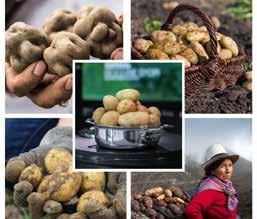
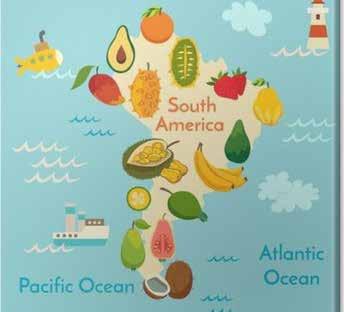
Secondly, the ‘X-ray Vision’ Carrots.
The fascinating story of the domestication of carrots in the fields of prehistoric Iran and Afghanistan and its subsequent spread to Egypt and China may be found in the history of the crop, which dates back 5,000 years.

By the 13th century, carrots were grown in China and northwest Europe, and during European colonial rule, wild carrot was mistakenly intro duced as a weed in the United States.
Thirdly, one of the most widely discussed vegetables (or rather fruit?); the tomato.

The tomato has had a fair share of contro versy with at some point in history, being widely known as the ‘poison apple’ which was later cleared.
However, the wild species first appeared in South America’s Andes Mountains, most likely in Peru and Ecuador. It is believed to have been domesticated in pre-Columbian Mexico where the term “tomatl” is tak en from the Náhuatl (Aztec) language to derive the name ‘tomato’.

Lastly, the mighty beans. Due to the existence of many cultivars and varieties, it is clear that the history of beans is long and interesting. The first discoveries and evidence that humans used beans as food date back 9,000 years and are said to be discovered in Thailand.
Beans were also discovered in the tombs of the Egyptian monarchs, where they had been buried as food for the dead and their souls in the hereafter.



The common thread in the long history of the bean is that the vegeta ble played a vital role in the nutritional health of many cultures. It is clear that these vegetables have played significant roles in the world and the stories behind their domestication or origin are not only humble and noble but long and interesting.

Masiziba Hadebe





Imagine a world without potatoes?
HOW TO CHOOSE YOUR CAREER

Subjectsyour






Sondlo & Knopp Advertising
Choose
Careerchoice For you to pursueyour career choice. You need to passyour NationalSenior Certificate! The Eastern Cape Department ofEducation encourages learners to choose suitablecareer path, by collecting information that will helpthem pursue their career / field of study. “ it is in your hands “ - Nelson Rolihlahla Mandela Knowing yourself and your capabilities Career Planning
... into the future
Fabric-free clothes
Fancy a new dress? Load the spray gun and spray it on! Read here. This is all quoted from the article.
Fashion shows can still sur prise. And the Paris Fashion show this year surely did just that.

CNN: Bella Hadid closed French label Coperni’s Spring-Summer 2023 show with a dress that was sprayed on in front of a live audience. The supermodel walked onto the runway wearing nothing but nude underwear before Manel Torres — the creator of the patented sprayon technology, Fabrican — and two scientists applied a misty liquid that transformed, almost instantly, into a wearable material.

For nearly 10 minutes, guests watched in awe as Torres and his team realized Coperni’s design in real time. To finish the dress, the label’s head of design, Charlotte Raymond, walked onstage and gently manipulated the neckline while it was still drying and cut a dramatic leg slit.

The dress had no seams and no hem. And, from afar, the fabric looked like a smooth jersey that appeared to move with the ease of a T-shirt. But when Hadid completed a lap around the runway, one could see a gentle texturing reminiscent of water droplets.

“You can wear this dress, keep it as a dress and put it on a hanger. But if you don’t want it anymore, you can put back the dress into the liquid and you can immediately spray it again,” Coperni’s creative director and co-founder, Sébastien Meyer, told CNN at the brand’s Par is atelier ahead of the show.

The innovative material has been in development since the early 2000s. Short fibers are bound together with natural and synthetic polymers and then mixed with liquid solvents that immediately evaporate once the aerosol hits skin or other surfaces, according to a press release from the British company behind the technology. The fabric’s texture can also be manipulated according to the type of fibers and binding agent used.

The collection also featured a nod to actress Fiona Johnson’s red dress in “The Matrix,” as well as a series of jackets with boxy shoulders referencing the silhouettes of characters in the online game Roblox.
Welcome to the new world in garments
New Exhibitions

We added two new exhibitions to our collection on the floor. The 4IR and Mirror Maze exhibitions
4IR Exhibition
The 4IR exhibition currently hosts the Humanoids (two small ones and the big one called Pepper), Virtual reality Station, Augmented Reality and the interactive displays integrated with of a number of TV screens.
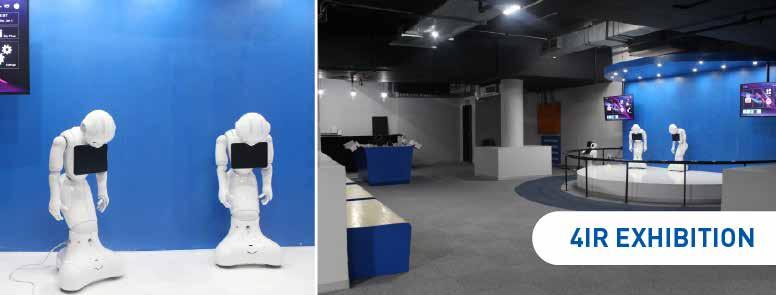
This concept is through the touch screen located at the entrance to the center. Interactive display section has been created where visitors are encouraged to use traditional touch screens to immerse them selves in games and content around Science Technology Engineering and Arts and Mathematics (STEAM).
Children are provided with the opportunity to play games to train their analytical ability, improve their ability to solve puzzles and chal
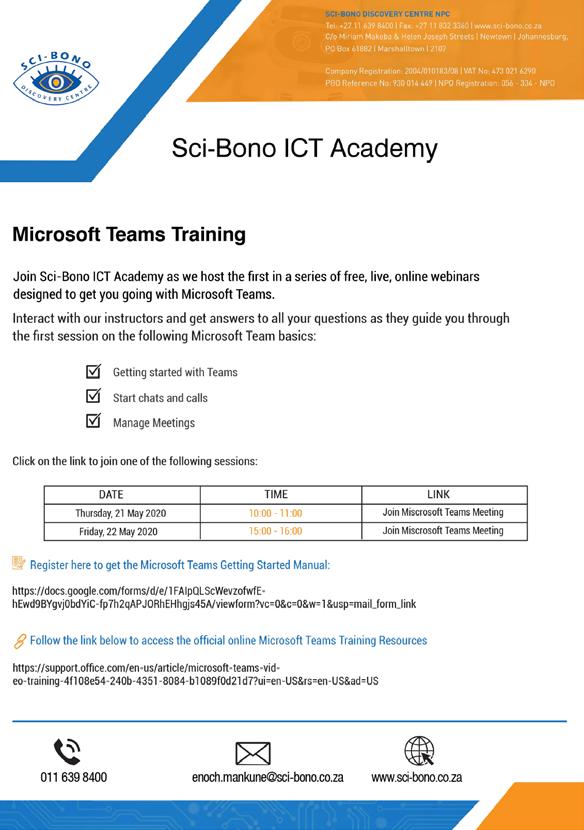
lenges. They are also challenged to explore more traditional content style, such as exploration of subjects including how Artificial Intelli gence works, Machine Learning, how data transfers over networks etc.
Science Exploration
While traditional science teaching has complex challenges around logistics, safety and costs. VR has none of these limitations. Ex periments are done as often as needed with no physical costs of materials or safety concerns. Students can learn about physics and chemistry, life science etc. in a safe environment. Within VR learning occurs without any distract but with full immersion. Learning and un derstanding mathematics becomes easier and more fun inside of VR due to the nature of games and how they are designed.
This is designed to make learning and exploration real fun especially for little ones. Wide learning opportunities exist through this exhi bition, children have many prospects to learn on, e.g. google earth exploration experience.
With Google Earth VR, chil dren can travel to almost any place in the world. They can fly all over the world and explore any city, any monument and landmark anywhere in the world.The exhi bition has two different types of humanoids the small one (called Sanbot Max and the Bigger one called Pepper).
The Sanbot Max robot was designed to be implemented into nu merous kinds of business scenarios, providing customers and staff members with intelligent and efficient services.
Pepper is a semi-humanoid robot, which means that a human has to control it. It is designed with the ability to read emotions. Pepper recognizes faces and basic human emotion.
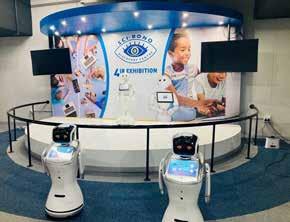
Drones and Mirror Maze
Drones Pilots at the Clubhouse
Did you know that the Clubhouse has three certi fied drone pilots?

They also have 10 DJI Tell drones that they will used for their drone course.
They are currently putting together content for the said course.

In addition, the Clubhouse offers programmes such as Teach Fundamentals of drones, real-life applications of drones: namely surveillance using object identification and tracking to videography for commercials and other media use.

This includes python programming that covers drone automation.

Mirror Maze Exhibit
A mirror is an object that reflects an image. Light that bounces off a mirror will show an image of whatever is in front of it, when focused through the lens of the eye or a camera.
Mirrors reverse the direction of the image in an equal yet opposite angle from which the light shines upon it. This allows the viewer to see themselves or objects behind them, or even objects that are at an angle from them but out of their field of view, such as around a corner.
Natural mirrors have existed since prehistoric times, such as the surface of water, but people have been manufacturing mirrors out of a variety of materials for thousands of years, like stone, metals, and glass. In modern mirrors, metals like silver or aluminum are often used due to their high reflectivity, applied as a thin coating on glass because of its natu rally smooth and very hard surface.
A maze is a path or collection of paths, typically from an entrance to a goal. The word is used to refer both to branching tour puzzles through which the solver must find a route, and to simpler non-branching patterns that lead unambiguously through a convo luted layout to a goal. The pathways and walls in a maze are typically fixed, but puzzles in which the walls and paths can change during the game are also categorised as mazes or tour puzzles
Mirror Maze
The mirror maze itself is a pattern, combining several characteristics of geometric patterns: repetition, symmetry and tessellation using repeated equilateral triangles. These triangles fit together without any gaps or overlaps, creating a tessellation. Mirrored surfaces all around reflect the pattern so that it repeats and appears infinite.

Remember last month we wrote about the ‘alternative’ Nobel Prize – the Ig Nobel? You may find that there can be an overlap. Some of the Ig Nobel themes are rather weird, but so are some of the ‘real’ Nobel Prize themes.
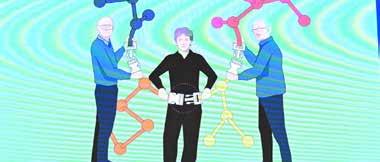
Let us look at some of these mysteries things:
Nobel Prize – Physics: This was awarded to a team consist ing of Alain Aspect, John Clauser and Anton Zelinger. CNN: “The trio won for their experiments with what’s known as entanglement – a mind-boggling phenom enon when two particles behave as one and affect each other, even though they can be at a vast distance to one another, on opposite sides of the planet or even the solar system.

Nobel Prize –Chemistry
This was a warded to a team consisting of David W.C. MacMillan, Carolyn R. Bertozzi and K. Barry

2022
Nobel Prizes for 2022 have now been awarded.
Sharpless. The theme was: ” “for the development of click chemistry and bioorthogonal chemistry”
Nobel Prize – Medicine
CNN: “Swedish geneticist Svante Pääbo has won the Nobel Prize for medicine for pioneering the use of ancient DNA to unlock secrets about human evolu tion.
Pääbo found that most present-day hu mans share 1% to 4% of their DNA with Neanderthals, meaning Neanderthals and Homo sapiens must have encoun tered one another and had children before Neanderthals went extinct around 40,000 years ago.

Nobel Price – literature
BBC: “French writer Annie Ernaux has won the Nobel Prize in Literature, for what the panel said was an “uncompromising” 50-year body of work exploring “a life marked by great dis parities regarding gender, language and class”.

Nobel Prize – Peace
CNN: The Nobel Peace Prize has been jointly awarded to Belarusian activist Ales Bialiatski, Ukraine’s Center for Civil Liberties and Russian hu man rights organization Memorial.
The three winners will share the $900,000 prize money. The Nobel prizes will be officially awarded at a ceremony on December 10, the anniversary of Alfred Nobel’s death.
Last year’s Peace prize was won by persecuted journalists Maria Ressa and Dmitry Muratov. Previous winners include Nelson Mandela, the Dalai Lama, Malala Yousafzai and Barack Obama.
How did it start?
Wiki: The Nobel Prizes are five separate prizes that, according to Alfred Nobel’s will of 1895. They are awarded to “those who, during the pre ceding year, have conferred the greatest benefit to humankind.” Nobel Prizes were first awarded in 1901.
Nobel Prizes are awarded in the fields of Physics, Chemistry, Physiology or Medicine, Literature, and Peace.


The prize ceremonies take place annually. Each recipient (known as a “laureate”) receives a gold medal, a diploma, and a monetary award.
A prize may not be shared among more than three individuals, al though the Nobel Peace Prize can be awarded to organizations of more than three people.
The Nobel Prizes, beginning in 1901, and the Nobel Memorial Prize in Economic Sciences, beginning in 1969, have been awarded 603 times to 962 people and 25 organizations.
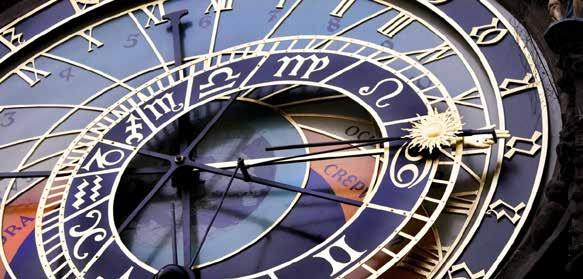
Five individuals and two organisations have received more than one Nobel Prize.
Alfred Nobel was born on 21 October 1833 in Stock-
holm, Sweden, into a family of engineers. He was a chemist, engineer, and inventor. In 1894, Nobel purchased the Bofors iron and steel mill, which he made into a major armaments manufacturer. Nobel also in vented ballistite.

This invention was a precursor to many smokeless military explosives, especially the British smokeless powder cordite. Nobel amassed a fortune during his lifetime, with most of his wealth coming from his 355 inventions, of which dynamite is the most famous.

In 1888, Nobel was astonished to read his own obituary, titled “The merchant of death is dead”, in a French newspaper. It was Alfred’s brother Ludvig who had died; the obituary was eight years premature.
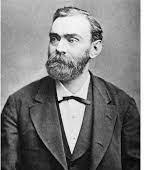
The article disconcerted Nobel and made him ap prehensive about how he would be remembered. This inspired him to change his will.
Nobel bequeathed 94% of his total assets, 31 mil lion SEK (c. US$186 million, €150 million in 2008), to establish the five Nobel Prizes.
The executors of the will, Ragnar Sohlman and Rudolf Lilljequist, formed the Nobel Foundation to take care of the fortune and to organise the awarding of prizes.
Aim high: Nobel Prize is the ultimate.
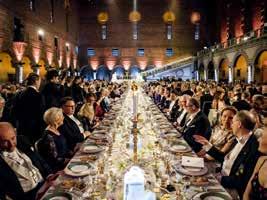
You will be in good company
Chess – it is obvious

Now we have a good scandal about chess and cheating. However that is even possible, but we will get to that.
I found a lot here, here and here.
Here is the background: Carlson (31) is the reigning champion. The world’s numero uno in chess. With 53 victories over some 10 years, he is a very strong player.

Now he is facing a very young (19 year old) chess contender. Hans Niemann. Nieman is a comet in the chess world having advanced from #800 to #50 in a few years.
Carlsen playing white moves first, but little Niemann soon gets to dominate the game and puts the reigning champion into a hopeless position. Carlsen resigns the game, admitting defeat.
That should be it. A new star in the universe beating the old guard. But that is far from it.
Carlsen resigns from the tournament although there are still six games to go. Everybody shocked!
That should surely be it, but not so. Carlsen is posting a cryptic message: “if I speak I am in big trouble”. What does he mean?
Did Carlsen really say that this new lit tle star was cheating? Now chess.com – the biggest online chess platform removes Niemann. The question is: did he cheat? Nieman does admit that he cheated once when he was 12 and once when he was 16. It sounds like children playing chess, but maybe not.
Niemann goes on the offensive – they are ruining my career, not by even accusing me to my face, but by hints and winks and so on!
So experts and former gurus are analysing the game. Conclusion: no cheating can be detected!
That is it then? Not really. Next game between Carlsen and Niemann, Carlsen makes one move and then resign the game!
That has never happened before. He is basically say ing that I am not going to play Niemann because he is a cheat. Carlsen is walking away from the tournament as well.
Carlsen is now directly accus ing Niemann of cheating and more often than anything.
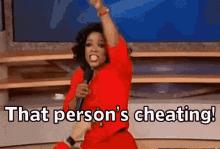
But is it so unusual that a 19 year old chess guru can beat the number 1? not unusual! Chess is something for young people.
We await the final outcome!

How do you even cheat in chess?
Let us start with the obvious: Artificial Intelligence and super computers can beat any champion now. Experts have concluded that a draw can be possible, but not a win. Not anymore at least. Things have evolved since Kasparov played IBM’s ‘Deep Blue’ (he won one game and lost two).
Online chess games can be ‘played’ with the help of a chess program (and there are several of them). But let us look at the real deal. Over the board game, two players, 32 chess pieces.

One way of doing it is to go to the loo re peatedly and checking the cell. Well, of course it can be stopped with a no-phone demand. But then hide the phone in the booth at the toilet? And this has happened.
A player had a mini-camera hidden in a pendant around his neck. So he was looking at what his people signalled via morse code from the chess program. Very smart indeed.
Strapping a cell phone to the ankle and let ting the people tap out the next moves? Easy to do.
Having a ‘helper’ standing in the back and signaling the next move? Easy to do.
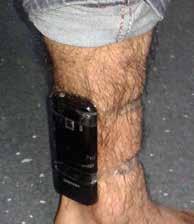
Says Chessquestions.com: “Chess Grandmasters can no longer beat computers today as they did right up to the 1990’s. Whilst the human brain is creative and intuitive, it lacks the ability and processing power to completely avoid mistakes like modern computer software can in the 21st-Century.

They follow up with the reality of AI software: “Artificial intelligence has already been shown to outperform humans in other games. Most popu larly, they tested artificial intelligence systems in playing the game “Go” against the top “Go” player in the world. The system won.
With artificial intelligence, the systems can actually learn as they go along and essentially contin ue to improve all on their own, without any further developments from the human software devel opers.
For example, with the game of “Go,” an A.I. system was fed the information from previously played “Go” games that came from profes sionals.
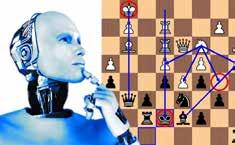

This technology can then take in all of that data and learn the rules of the game based on what it is picking up, the patterns it is detecting, and so on.
As it plays more and more games, those games get fed back into the system, patterns are detected, and the machine then teaches itself to become a better player.
Humans shall lose!
What is NSFAS?
The National Student Financial Aid Scheme (NSFAS) is a government entity under the Department of Higher Education and Training (DHET)
What does NSFAS do?
Supports access to and success in, higher education and training for students
from poor and working-class families who would otherwise not be able to afford the cost of studies at a public university or Technical and Vocational Education and Training (TVET) college.
•Provides financial aid to eligible students who are studying or plan to study at any of the 50 TVET colleges or the 26 public universities in South Africa
•Identifies students who qualify for the bursary
•Provides bursaries to students
Who qualifies for NSFAS funding?
• All South African citizens
• All SASSA grant recipients
• Applicants whose combined household income is not more than R350 000 per annum
• Persons with disabilities with a combined household income of not more than R600 000 per annum
• Students who started studying at a university before 2018 and whose household income is not more than R122 000 per annum
What does the NSFAS bursary cover? How, where and when can one apply for NSFAS? Connect with us using the following channels: Does the NSFAS bursary offer any additional support for students with disabilities? • Registration • Tuition • Book allowance • Accommodation allowance • Transport allowance • Food allowance • Personal care allowance Yes, NSFAS further supports funded students with disabilities through an additional allowance that covers: • Medical assessments • Assistive devices • Human support to cover for the cost of a caregiver, guide dog, scribe or tutor. National Student Financial Aid Scheme myNSFAS myNSFAS NSFAS Connect: www.nsfas.org.za and log into your myNSFAS account NSFAS Connect gives you access to quick facts and frequently asked questions. Applicants and students can also submit and track a query for further assistance. The 2021 application season will be communicated through media, social media and the NSFAS website www.nsfas.org.za. Applications are submitted online through the NSFAS website: www.nsfas.org.za To apply for NSFAS funding students must have a registered myNSFAS account If you plan to study in 2021 and require support from NSFAS, you may open your myNSFAS account now to keep updated with the latest funding information.
Another week, another PM
UK got itself a new PM – again. We really would love to write about something else, but we have to. World news, you see.

After all the electioneering and campaigning, the conservative party finally got to select a new PM after Boris got forced out. The two contestants were Lizz the Brief and Rishi Sunak.
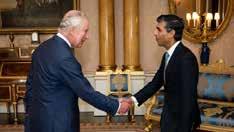
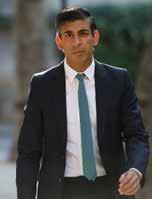
Lizz got elected and moved off to #10. And crashed the economy together with the finance minister. Even the Bank of England (the reserve bank as it is) had to intervene and calm the nerves of the entire nation.
So she got herself fired.
The conservative party did not have any appetite for another round of campaigning and also rejected calls for a general election. Solution: a swift and fast ‘mini-poll’ and now the previous contestant got elected. Off to the King and it is all official.
We have written about Rishi Sunak before so we are not going to get boring with repetition. Suffice to say: he was the finance minister under Boris so he knows money. He is an extremely successful investment banker in his own right, so he really knows money.
Sunak has an MBA from Stamford in the US (that is where you get to know money). It was at Stamford he met his coming wife who also holds an MBA. She is an investment banker in her own right. Combined wealth is close to 1 billion Pounds!

That is it about facts from Wiki.
But what about politics? And who is Su nak really?
That Sunak would be the only choice after the Lizz debacle is clear. There was a distinct need to calm the nerves of all people. On top of, it is not just a reset of the economy.

Something else happened and it is now also a matter of fixing, not just going back a week or two.
The former finance minister was the only one with a bit of credibility (and knowledge probably) who would be able to do something fast.
We may ask if it is then all about money (of which Sunak has a working knowl edge)?
It is more than that, but without fixing the money part, there is no easy path to the sunny uplands.

Rishi Sunak’s first message for the people of the UK
Let us start with the easy bits:
Sunak has named his new cabinet. No surprises really. Hunt carries on as Finance Minister, Raab is still there and the rest are not new either. It says one thing: stability and no more surprises here.


Can there be changes later? Surely so, but that is months into the future.
Do we then know what Sunak has on his plate and how he intends to do it? Yes, sort of. We have the indications from the campaigning some months ago and those are probably the best indications for now.
The horrible thing is: the mess Boris created is still there and it just got a bit more exciting after Lizz the Brief.
Money
Here we are talking the energy bill for households. The promised subsidy will only hold until April. There is no money for anything more and all and sundry knows that. And the cost of living will have to be addressed in a meaningful way and that is more money. Sunak will have to find it

somewhere and that can only mean budget cuts here and there.
Ukraine
No surprise – no change in policy.
Northern Ireland and EU

The circle is still to be squared! There is still no government for Northern Ireland as DUP still blocks any formation of government in protest against the protocol.
Sunak hinted in September that certain parts of the protocol had to go. Was it an empty electioneering promise or reality? Time will tell.
It is hard to see what parts can satisfy DUP and if nothing is happening now, there must be another election in Northern Ireland. Will that bring any clarity? Probably not. Sein Fenn will grow bigger but the power-shar ing agreement still stands.
Sunak is not as confrontational as Boris on Brexit and EU. There would (and should!) be room for talks and other compromises.
EU will have to take the threat of law suits down and get into discussing the facts and the ‘lay of the land’.
General election
There is no way that the conservative party will dare to have a general election right now. The chance of being voted out because of the manner in which they have governed in the last 6 months is too high. That should give Sunak time to get his pri orities sorted Good luck!
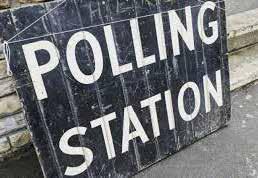
A BIG diamond has now been auctioned. At a BIG price. As in nearly $60 million.
I found something interesting here and here

CNN: “The 11.15 carat pink diamond, referred to as the “Williamson Pink Star,” is one of the purest, pinkest diamonds ever to come to auction, ac cording to a news release from Sotheby’s.”

Diamonds are like babies. They get names. This one is named Williamson Pink Star in honor of two other pink diamonds, the CTF Pink Star, which sold for $71.2 million in 2017, and the “Williamson” diamond, a pink diamond gifted to Queen Elizabeth II.
Pink diamonds are rare and big ones are even more unusual. Pink diamonds are among the rarest and most valuable of the coloured dia monds. The source of their pink color is debated, and one of the widely accepted theories is that the pink is caused when the diamond faces shear pressure during its formation.
Colour, and not just size, is considered while determining the value of a pink diamond. Larger a pink diamond, and better its color, the more valuable it will be. The Gemological Institute of America grades pink diamonds based on their colour as: Faint, Very Light, Light, Fancy Light, Fancy, Fancy In tense, Fancy Vivid.

There are some ‘famous’ diamonds (Wiki): The Cullinan Diamond is the largest gem-quality rough diamond ever found.
It was named after Thomas Cullinan, the owner of the mine. In 1907, the Transvaal Colony government bought the Cullinan and Prime Minister Louis Botha presented it to Edward VII.
The second-largest is Cullinan II or the Second Star of Africa, mounted in the Im perial State Crown. Both are part of the Crown Jewels.
The Koh-i-Noor is one of the largest cut diamonds in the world. It is part of the Crown Jewels of the United Kingdom. The diamond is cur rently set in the Crown of the Queen Mother.
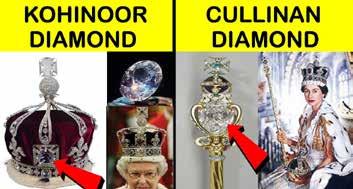


It was allegedly acquired by the Delhi Sultan Alauddin Khalji during his invasion of southern India. However, the first verifiable record of the diamond comes from the 1740s when Muhammad Maharvi notes the Koh-i-Noor as being one of many stones on the Mughal Peacock Throne that Nader Shah looted from Delhi.
The diamond then changed hands be tween various factions in south and west Asia, until being ceded to Queen Victoria after the British annexation of the Punjab in 1849
Where are they coming from?
Diamond is a solid form of carbon with its atoms arranged in a crystal structure called diamond cubic. Diamond has the highest hardness and thermal conductivity of any natural material, properties that are used in major industrial applications such as cutting and polishing tools.
Most natural diamonds have ages between 1 billion and 3.5 billion years. Most were formed at depths between 150 and 250 kilometres (93 and 155 mi) in the Earth’s mantle, although a few have come from as deep as 800 kilometres (500 mi). Under high pressure and temperature, car bon-containing fluids dissolved various minerals and replaced them with diamonds.
Much more recently (hundreds to tens of million years ago), they were carried to the surface in volcanic eruptions and deposited in igneous rocks known as kimberlites and lamproites.
Synthetic diamonds can be grown from high-purity carbon under high pressures and temperatures or from hydrocarbon gases by chemical vapor deposition (CVD). Imitation diamonds can also be made out of materials such as cubic zirconia and silicon carbide. Natural, synthetic


and imitation diamonds are most commonly distinguished using op tical techniques or thermal conduc tivity measurements.
True or false: Only a diamond can cut another diamond? True! But you can shatter a diamond with a hammer. Or melt a diamond. Or … many other things.
Uncut diamonds may look like small dirty pebbles. Wiki: Mined rough diamonds are converted into gems through a multi-step process called “cutting”. Therefore, diamond cutting is traditionally considered as a delicate procedure requiring skills, scientific knowledge, tools and experience.

Its final goal is to produce a faceted jewel where the specific angles between the facets would optimize the diamond luster. The weight reduction upon cutting is significant and can be of the order of 50%.
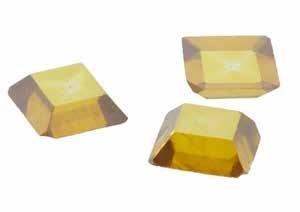
Several possible shapes are considered, but the final decision is often determined not only by scientific, but also practical considerations. For example, the diamond might be intended for display or for wear, in a ring or a necklace, singled or surrounded by other gems of certain color and shape
Eighty percent of mined diamonds ( (27 tons) annually) are unsuitable for use as gemstones and are used industrially. In addition to mined diamonds, synthetic diamonds found industrial applications almost immediately after their invention in the 1950s; another (114 tons) of synthetic diamond is produced annually for industrial 90% of which is produced in China. Approximately 90% of diamond grinding grit is cur rently of synthetic origin
Hola


MaHigh-School We just created our whatsapp group! Why not join? The group name is Hola MaHigh-School and you can chuck me a whatsapp on 076 503 1282 and you will get added pronto.
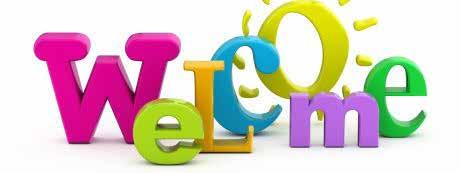

MaHigh-School What will you receive? We will have the monthly digizine in your hands via the link to Issuu. That is a quick way of making sure you can enjoy it in your own time. ` Info and more info We promise not to burden you with too much info, but if and when something great is happening (an article perhaps?) we will push it out to you. Can I post as well? Limited for now, but please feel free to whatsapp me on my office cell: 076 503 1282. If it is relevant, we wil ensure it gets out there.
It’s movie

All courtesy
Lord of the Rings: The


There are a few epic movies surely be one of them.
Yes, it has been chopped on Amazon. Go for it. I do it.
Let there be no mistake. talking a budget of something is a world record for a TV
movie time!

courtesy of various The Rings of Power

movies around and Lord of the Rings must
chopped up in eight episodes and it is available do not know how else we can get to watch mistake. The rings of power is massive! We are something like $1 bn. Of course that in itself TV series.

It is set some thousands of years before The Hobbit and the 3-part Lord of the Rings. It sort of explains where it all starts and the origins of the species.
It could be boring, but I don’t think so!
Enjoy something epic!
Hello November

Vegan day
World Vegan Day is an annual event celebrated by vegans around the world every 1 November. The benefits of veganism for humans and the natural environment are celebrated through activities such as setting up stalls, hosting potlucks, and planting memorial trees.
The event was established in 1994 by Louise Wallis, then Chair of The Vegan Society in the United Kingdom, to commemorate the 50th anniversary of the founding of the organisa tion and the coining of the terms “vegan” and “veganism”. Speaking in 2011, Louise Wallis said: “We knew the Society had been founded in November 1944 but didn’t know the exact date, so I decided to go for 1 November, partly because I liked the idea of this date coinciding with Samhain/Halloween and the Day of the Dead – traditional times for feasting and celebration, both apt and auspicious. other commemorative dates involving food security, reverence for life in all species, faith-based vegetarianism and animal advocacy, and more. World Vegan Day follows Vegetarian Awareness Month (October) and initiates World Vegan Month (all of November).
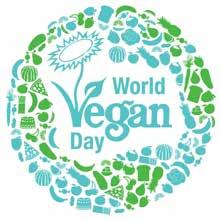
World Kindness Day is an international observance on 13 Novem ber. It was introduced in 1998 by the World Kindness Movement, a coalition of nations’ kindness NGOs. It is observed in many countries, including Canada, Australia, Nigeria and the United Arab Emirates.


Singapore observed the day for the first time in 2009. Italy and India also observed the day. In the UK, it is fronted by David Jamilly, who co-founded Kindness Day UK with Louise Burfitt-Dons.
World Kindness Day is to highlight good deeds in the community focusing on the positive power and the common thread of kindness for good which binds us. Kindness is a fundamental part of the human condition which bridges the divides of race, religion, politics, gender and location.
Kindness Cards are also an ongoing activity which can either be passed on to recognize an act of kindness and or ask that an act of kindness be done.
Approaches are being made to the United Nations by the peak global body, the World Kindness Movement, to have World Kindness Day officially recognized and its members unanimously sign a Declaration of Support for World Kind ness.



We need writers! Hola MaHigh-School is YOUR magazine. That is why we would love to see students writing for students about student life and everything of importance to a student in any grade10-12 across the country. What is required? That is easy: You have to be in grade 10-12somewhere Impeccable in your preferred language-and that might not be English. We try to be more than just English. Passionate about your topic of choice - no dull articles here. Do you get anything out of it? Well, not money, sorrry. BUT if we publish your articles you will have: Your bio in a commercial magazine A photo of yourself You can put it all on your CV you can use us as a reference
it is.
what
My name is Rofhiwa and I love to write. I have used my skills to express my thoughts on interna tional dealings of the world which have been published in Hola MaHigh-School.

has paid off, not only is my work printed for young people in the country to read, but it also contributed to me gettng a bur sary from CNBC-Africa to do my post-graduate studies. Would be a lot harder to get by if I didn’t have a platform like Hola MaHigh-School.

Is it important? YES
Look
Rofhiwa said:
It
What to do?Email me on ivan@romele.co.za:E-mailCellnamenumberaddress... and we will talk!
Next Time...
Next issue will be it for the year. It has been a long haul but not as ‘covid’ focused.
We are going to take it easy next time. It will be about my favourite topic: Holiday!
Holiday does not just mean doing nothing. There are plenty of thngs to do and see and experience. We have a lot of activities and we take a stab at it. The outdoors would be a logical place to start and we are lucky that we have so much nature around us. And it is not all about hiking in the mountains!
Of course we keep you up to speed on the out side world. Plenty of developments we predict. ... and movies and music and all things that will get us laughing. Until next time - next year!
Coronavirus Protect yourself Wash your hands with soap for 20 seconds

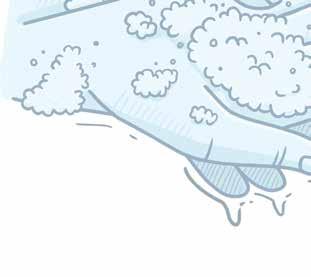
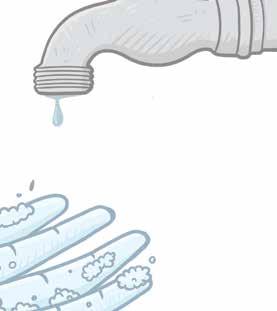
How long is 20 seconds?
the first verse of


national
Nkosi Sikelel’
CLEAN HANDS SAFER LANDS

Hum
our
anthem:
iAfrika More info: www.health.gov.zathebreadcrumbs.co.za







































 Artvilla Dakamela
Artvilla Dakamela













































































































